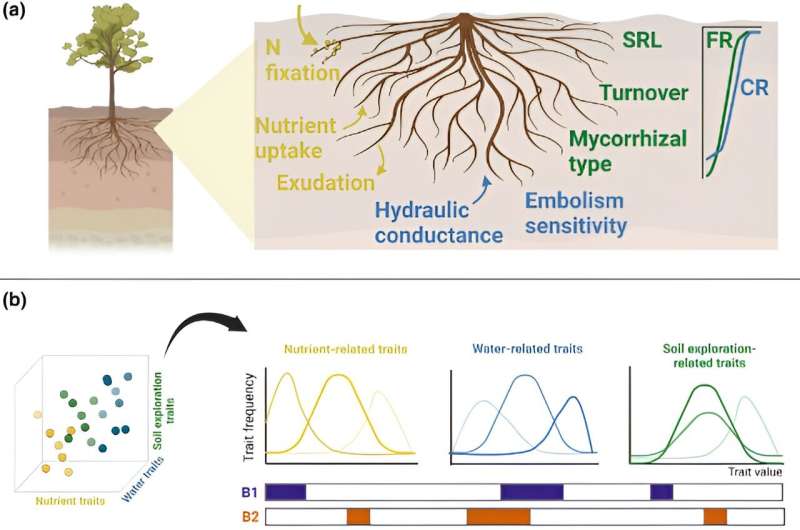The secret lives of roots: Tropical forest root systems are central to improving climate change predictions

International research co-authored by Joshua Fisher, associate professor in Chapman University's Schmid College of Science and Technology, suggests that studying root function in tropical forests could help vegetation models improve predictions of climate change. The study was published on Feb. 28 in New Phytologist.
When it comes to understanding climate change, vegetation models are vital tools that help scientists study plants' adaptation strategies to changing environmental conditions, including drying, warming and elevated carbon dioxide levels. However, these models have historically omitted one of the largest biomasses on earth: tropical forests.
"Tropical rainforests are among the least understood biomes on the planet, but exert among the greatest impacts on global climate, water and carbon cycling," Fisher said. "Our team coalesced the latest scientific understanding of how these ecosystems function together with how to mathematically capture these dynamics in global models. This forges a path forward to improved predictions of the fate of Earth under a changing climate."
An international group of scientists called TropiRoot, led by Colorado State University, has been working to provide much needed representation of tropical forests and root function in vegetation models. After studying root functions by synthesizing literature on the subject and measuring roots in tropical ecosystems in Costa Rica, Panama, Puerto Rico and Singapore, the team has contributed to a greater understanding of how carbon storage and belowground dynamics will respond to global change.
According to the study, tropical forests contain 30% of global soil carbon, most of which likely originates from root biomass, representing the second highest soil carbon storage rate after permafrost. By acting as carbon banks, tropical forests can help to prevent severe effects of climate change, but these banks are at risk as tropical forests experience warming, shifting rainfall patterns, deforestation and relative depletion of soil nutrients due to elevated levels of carbon dioxide in the atmosphere.
Compared to temperate forests, tropical forests have greater biodiversity, faster-acting processes and seasons based on rainfall rather than temperature. Over 50% of tropical forests are on old and strongly weathered soils, meaning their soils lack essential nutrients like phosphorus, so root systems have been forced to develop more efficient processes for recycling minerals. Additionally, tropical root systems have recently been described as growing differently from roots in other ecosystems, with unique combinations of physical traits and symbiosis with fungi and bacteria.
These unique features, combined with a lack of funding to support tropical forest research, have historically made tropical forests difficult to study and underrepresented in vegetation and global land-climate models. Better understanding how these aspects are responding to global change could give insights into the future of land-climate feedback.
More information: Daniela F. Cusack et al, Toward a coordinated understanding of hydro‐biogeochemical root functions in tropical forests for application in vegetation models, New Phytologist (2024). DOI: 10.1111/nph.19561
Provided by Chapman University Increasing tropical land use is disrupting the carbon cycle
No comments:
Post a Comment